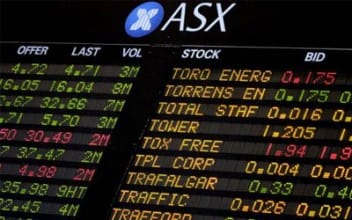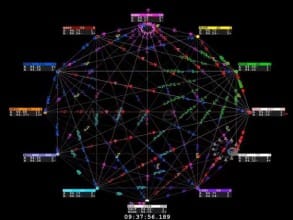Although high frequency trading has been an integral part of the capital markets in countries like the US and the UK for several years, it has been relatively slow to catch on in Australia. However, catch on it has, and Australia’s financial markets regulate ASIC has responded with the release of eight new rules for market participants regarding high frequency trading and dark liquidity. The rules will be rolled out over the next twelve months.
 Rather than cracking down on these controversial trading techniques, the new regulations are aimed at bringing a new transparency to the market and eliminate malpractices. For example, one of the dark liquidity rules states that any suspicious activity that is identified in a crossing system has to be reported to ASIC.
Rather than cracking down on these controversial trading techniques, the new regulations are aimed at bringing a new transparency to the market and eliminate malpractices. For example, one of the dark liquidity rules states that any suspicious activity that is identified in a crossing system has to be reported to ASIC.
“The final rules follow extensive internal analysis and consultation with industry and will improve the transparency and integrity of crossing systems and strengthen the requirements for market participants to deter market manipulation,” said ASIC Commissioner Cathie Armour at the official press briefing.
ASIC are not the only regulator to have approached this issue of late. However their balanced, welcoming approach has differed from that of Germany’s BaFin, which has put strict new rules in place that are causing distress to the market and putting pressure on HFT operators. By way of contrast, Australia’s rules are aimed at making Australia more attractive to high frequency traders, while ensuring that everything is above board.
In the conclusion to her address, Ms Armour stated: “‘We expect the new rules will quickly lead to changes in the behaviour of market participants, building on the positive changes we have already seen with other recent rule changes and the work of ASIC’s taskforces on dark liquidity and high frequency trading.”
The New Rules in Brief:

Dark liquidity
Crossing system transparency and disclosure:
- From 10th November 2013, operators of crossing systems will be duty bound to publish information about their crossing system (e.g. products traded) publicly on the web.
- From 10th February 2014, they must make disclosures to clients regarding the operation of the crossing system.
- From 9th May 2014 they must identify in trade information for wholesale clients the crossing system and whether they traded as principal. Crossing systems will also be publicly identified in course of sale reports.
Crossing system fair treatment
- From 10th November 2013, the same tick sizes that apply to exchange markets will also apply to crossing systems.
- Also from 10th November 2013, clients of crossing system operators will have the right to opt out of using their crossing system.
- From 10th February 2014, crossing system operators must have a common set of procedures which do not unfairly discriminate between users.
Crossing system monitoring
- From 10th November 2013, operators must monitor activity on their crossing system, and if any suspicious activity is identified it has to be reported to ASIC.
Crossing system controls
- From 26th May 2014, existing system and control requirements for automated order processing will extend to crossing systems
- From 10th February 2014, crossing system operators must notify users and ASIC about system issues as soon as practicable.
Enhanced conflict of interest obligations
- From 10th February 2014, market participants must protect confidential client information
- From 9th February 2014, market participants will be obliged to deal with client orders fairly and in due turn
Order flow incentives
- From 10th February 2013, market participants will be prevented from receiving negative commissions
High frequency trading

Manipulative trading circumstances of order
- From 9th February 2014, market participants must consider additional circumstances in considering whether a false or misleading market has been created; the frequency with which orders are placed, the volume of products that are the subject of each order and the extent to which orders made are cancelled or amended relative to the orders executed.
Manipulative trading rules harmonised
- From 9th February 2014, market participants of the ASX 24 market will be obliged to comply with new requirements to prevent manipulative trading, the same rules that currently apply to the ASX and Chi-X markets.
Tradersdna is a leading digital and social media platform for traders and investors. Tradersdna offers premiere resources for trading and investing education, digital resources for personal finance, market analysis and free trading guides. More about TradersDNA Features: What Does It Take to Become an Aggressive Trader? | Everything You Need to Know About White Label Trading Software | Advantages of Automated Forex Trading




































